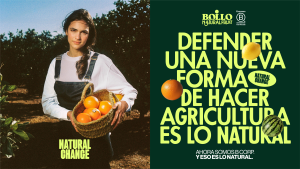The R&D team at Harmoniz has been working for years to face up to the agronomical challenges (yield and resistance to pathogens), without forgetting the more specifically commercial points: flavour, shelf life, freshness, nutritional values and attractive external appearance of the fruit…
A double perspective that has allowed it to consolidate its position on the market as a leading company, at the forefront in the development of innovative tomato varieties, with great flavour and resistant to viruses such as the ToBRFV.
At present, Harmoniz has around 20 resistant hybrids, including the red plum cherry tomatoes Basoche, Dormaplum and Flor de Andalucía, the midi plum tomato Midres, and different specialities in coloured tomatoes, such as Cantando, TT-768, Tom Ruby, Yellow Drop and many others.
Maury Fernández, General Manager of Harmoniz Ibérica, advances that “we will soon be launching resistant versions of the best well-known varieties in the Harmoniz range. We are very proud to be able to offer our clients immediate solutions.” They are reliable, profitable materials both agronomically and commercially, the hardiness of which have been proven and verified.
A paradigm shift
After a campaign with less production and good prices in tomatoes, the Spanish agricultural sector needs “certainty”, Maury Fernández affirms. Last year was full of risks “inherent” to the industry, such as ToBRFV and other emerging pests, as well as concurring problems which caused collateral effects, such as the geopolitical challenges. “They leave no margin for competitiveness, unless another production paradigm is reinvented.” Holland’s return to a production level similar to that prior to the crisis between Russia and Ukraine, the increase in costs and, above all, the growing European importation of produce from third countries, particularly Morocco, are some of the main challenges.
Regarding Morocco, Maury Fernández is calling for people to be aware. It foresees increasing its fruit and vegetable production surface area by 5,000 hectares over the next seven years. To do this, they are developing a strategy aimed at having more water and offering an increasing amount of competitive advantages, be they logistical, labour costs, or for the lack of regulations on the use of pesticides.
Within this context, Spanish farmers are being forced to abandon their traditional focus on volumes if they want to continue being competitive on the tomato export market. “On the one hand, positioning their products outside the commodities segment, targeting an innovative quality based on diversification and being capable of offering new consumption experiences with added value. And on the other hand, increasing their level of professional skills, planning and increasing wide-scoped collaborations that involve each agent on the business chain.”
This is a radical change of direction on the market, but one which, in his opinion, is essential for the sector’s survival. A direction that is inherent in Harmoniz’ DNA. As its actual name indicates, it creates harmony between the different links on the chain and innovation is a concept that underlies all the levels of its activity, with creativity, quality, diversification and product distinction as the basis for their daily work.



















